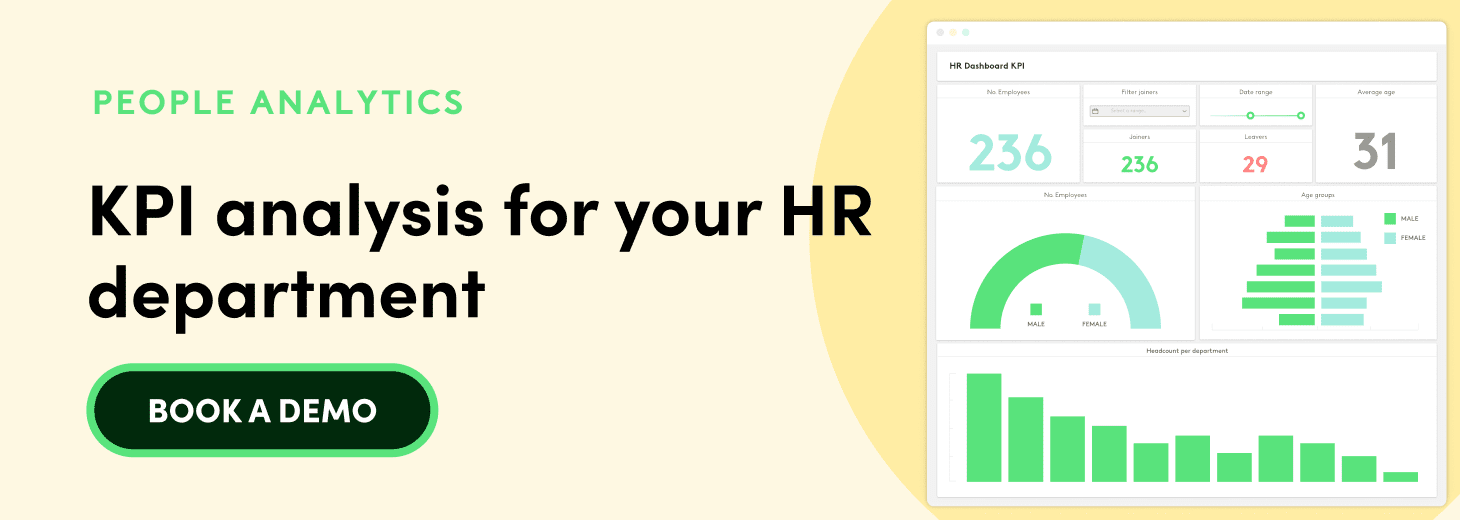Analysing an organisation’s staff data is a way of improving decision making and efficiently evaluating initiatives in progress. It is also a way to use the most relevant KPIs for people management, optimise administrative processes and budget investments, and encourage employee development.
All this can be achieved by implementing a People Analytics strategy. However, this in itself can present a number of challenges, above all relating to goal setting, deciding on which tools will be useful or which metrics are most relevant, while remote working predominates.
To get a basic notion of how SMEs can implement a People Analytics strategy, we interviewed Daniel Díaz Rivas, Culture Insights & Engagement Specialist in the People Analytics department at Meliá Hotels International. Daniel also talks to us about the impact that Covid-19 has had on his sector and what direction data analytics will take in the next few months.
Does it make sense for an HR department to start working on People Analytics?
For HR departments, using a People Analytics strategy is a way to respond to the challenges that arise in business situations and make decision making more effective through data analysis. Also, more than just providing a solution, our work involves offering insights about what is happening and identifying trends to act upon.
When should a company start to introduce this strategy?
For me, it should always start with a specific question: what do I want to do? In other words, I would avoid reporting for reporting’s sake, and focus on specific questions I want to find an answer to. How to retain key talent, improve my productivity, streamline the recruitment process or what is the return on the development program I have just implemented, are just a few example questions.
What advice would you give to SMEs that want to implement a People Analytics strategy?
In this context I think there are two fundamental aspects. On one hand, once the motive for implementing a People Analytics strategy has been established, we need some sort of database and record of information relating to staff so we have somewhere to start from. It doesn’t have to be perfect, but it does have to exist.
On the other hand, this database must be active and constantly fed with data on our employees.
Finally, in all companies and especially in the case of SMEs, custom People Analytics software is a must, as is introducing analytical capacities into the HR team.
Which metrics should be prioritised?
I don’t believe in sure-fire metrics for everyone, but that each company should prioritise their own. I always recommend starting with the ones that we should have already due to our obligations (such as those required by different legislation). Then, I recommend prioritising the metrics that fit with the company culture, and that are managed by the departments responsible for business strategy, so it speaks their own language.

How can you improve the employee experience through data analysis?
As surprising as it may seem, by using measurement and exhaustive analysis we can hear our people better and observe first-hand the real pulse of what is happening in the company.
For us at Meliá, by starting to do real, agile evaluations of feedback this has meant a gear change in terms of listening to employees. As we are a family company, it is something we have always championed: the voice of our people. And People Analytics is really helping us identify what employees think and feel when we implement a project and what changes they are experiencing. In this way, we can avoid isolated feelings and comments and truly listen to our people and make the right decisions.
What variables and challenges has coronavirus brought about when it comes to analysing and processing data?
For Meliá it has been a very tough year and a half because the business has suffered and on an internal level it has made us reconsider many things. Tourism is changing the world over and the same has happened to us in the HR department and in People Analytics.
An aspect that has been very important is actively listening to employees. It has also given us the chance to add tangible value in these times where everything is changing very rapidly and in a sector in which there is constant questioning on a business level.
What impact has remote working had on People Analytics?
As I said, the new reality has accelerated the trends we already saw coming in the last few years.
For example, with remote working, we have had cases of employees who have been with us for more than a year and have still not set foot in the office. This presents us with
engagement and retention challenges that oblige us to strengthen the appeal of our value proposition and at the same time be constantly evaluating the employee experience.
Therefore, People Analytics provides the answer to how we face these challenges, through continuous updates, using analysis to respond to certain questions and decision making based on facts.
How does People Analytics change traditional HR roles?
Here the key is understanding that data analytics has to be a tool constructed on the base of what was already being done and what works.
There are human resources teams that, without previous experience of People Analytics, have been working very well for a long time. So, this strategy should help to identify what works and help to discard anything that is failing.
I think that it is a mistake to mistrust our intuition, constructed over a period of many years of experience, because of an analysis we have carried out. On the contrary, both tools, intuition and analytics, optimise the human resources function.
What is the future of People Analytics?
This strategy should be integrated into HR departments as a tool more than this area itself. So, I like to say that People Analytics has to, in a way, disappear.
In other words, rather than there being a specific role, or an analytics ‘guru’ in the HR department, all members of this area should immerse themselves in analytical capacities. For example, at Meliá we are incorporating these skills into training teams, recruitment, and the company culture.
In any case, it is still a challenging time for many companies that have to start from zero. Therefore, I would reiterate that specific People Analytics tools and software are immensely useful.
About Daniel Díaz Rivas
Daniel Díaz has a long career history in the field of Human Resources, having specialised in People Analytics. His current role is as Culture Insights & Engagement Specialist in Human Resources at Meliá Hotels International. His responsibilities at Meliá include implementing data culture in the field and developing strategic measures alongside the HR department.
Previously he was International Business HR Partner at Indra, responsible for setting up the HR function in decentralised countries. He has a degree in psychology and a post graduate degree in HR and Organisations.
%20(1)%20(1).png)


